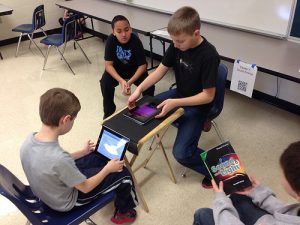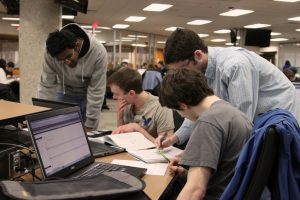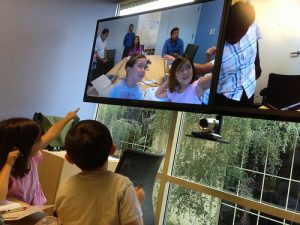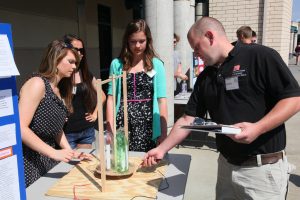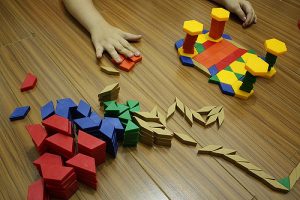
The article, “Mathematics Instruction for Students with Learning Disabilities: A Meta-Analysis of Instructional Components”, helped me to further analyze the Jasper series and its goals. Within this study the researchers sorted the studies by major types of instructional variables. Their interest was in the detailed curriculum design and teaching practices that resulted in enhanced mathematics and they focussed on the essential attributes of effective practice. They went further and defined “explicit instruction”, which in previous research has shown positive effects in terms of increased understanding of mathematical skills for students with learning disabilities. The researchers broke it down into three components: (a) The teacher demonstrated a step-by-step plan (strategy) for solving the problem, (b) this step-by-step plan needed to be specific for a set of problems (as opposed to a general problem-solving heuristic strategy), and (c) students were asked to use the same procedure/steps demonstrated by the teacher to solve the problem (Gersten, Chard, Jayanthi, Baker, Morphy & Flojo, 2009). They also looked at the methods that exemplify a generic approach for solving a problem, student verbalizations of their mathematical reasoning, using visual representations while solving problems and range and sequence of examples. They further investigated providing ongoing formative assessment data and feedback to teachers on students’ mathematics performance, providing formative assessment data and feedback to students with LD on their mathematics performance and peer-assisted math instruction.

The results of the meta-analysis rendered some interesting data. Firstly, peer assisted learning did not provide much benefit, whereas being tutored by a well-trained older student or adult appears to help significantly (Gersten, et al., 2009). When assisting students with LD in my classroom, this finding is important, as I often pair my students with LD with their peers in order to provide more scaffolding or scaffolding when I am busy helping other students. I will need to rethink this approach.
In addition the two instructional components that provided significant benefits were teaching students to use heuristics (a process or method) to solve problems and explicit instruction (Gersten et al., 2009). When reflecting on these findings I still have some questions. I do teach my LD students a certain process or method to solving mathematical problems but I also don’t want to limit their strategies as we are being told to allow them to explore mathematical problems with a variety of strategies. Now that I think about this, perhaps students with LD do not benefit from a variety of strategies but are best served with a limited number of strategies to use, at least initially. In terms of explicit instruction, I do provide this to my students with LD, although they are also part of any open-ended problem solving that we do in class. I feel it is important to expose them to this type of mathematics as well, but perhaps they would be better served working on other math during this time. That being said, the researchers found that explicit instruction should not be the only form of instruction, so perhaps I should continue to expose the LD students to our open-ended problem solving discussions.
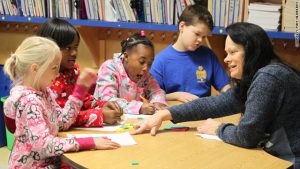
They also found that the sequence of examples is of importance when new skills are being taught, so scaffolding is critical for student success. Examples and problems should move from simple to increasing complexity (Gersten et al., 2009). When reflecting on my own teaching, I find that I do this naturally with all students, as it makes sense to me to move from simple to more complex problems. That being said, and reflecting on the Jasper series, perhaps introducing complex problems that students have to work through and problem solve through may be of more benefit. The Jasper experiment believes that engaging students in real-world problems that are inherently interesting and important helps students understand why it is important to learn various sub skills and when they are useful. The Jasper adventures are purposely created to reflect the complexity of real world problems (Cognition and Technology Group at Vanderbilt, 1992). As part of inquiry teaching (a method I use to teach some of the time in my classroom), I often introduce mathematical problems based on math explored in read-alouds. For example, when reading the book “Iron Man” we explored measurement as we explored how big we thought the Iron Man, the science fiction character in the story, would be compared to us as students. So in this way I attempt to introduce concepts that lead the students down possibly unexplored mathematical pathways and see what they can produce. I am left with the wondering: Do LD students benefit from this?
Importantly, the study showed that the process of encouraging students to verbalize their thinking or their strategies, or even the explicit strategies modeled by the teacher, was always effective (Gersten et al., 2009). In my teaching practice I often use verbal understandings to gain a better understanding of student understanding/misunderstanding and for ongoing assessment to move forward. I do this for all students, but particularly for students with LD.
It appears that teachers and students also benefit if the teachers are given specific guidance on addressing instructional needs or curricula so that they can immediately provide relevant instructional material to their student. Teachers require support!! This is an important point to discuss as educators are often expected to know what to do in all situations with a variety of different styles of learners, with a variety of curriculum and with a variety of learning abilities. As Schulman (1986) noted in his research, teacher training and the type of training provided needs to be revised to reflect both content and pedagogical knowledge. The fact of the matter is that educators do not have all of these skills and cannot devote the amount of time required to meet the needs of all students. Teachers require the supports of special education teachers, administration, professional development, etc. in order to gain and implement these skills. The research further disseminates this as the researchers recommend that providing specific instructional guidelines and curricular materials for teachers and co-teachers or providing support services, peer tutors, cross-age tutors and/or adults providing extra support would be of direct benefit to students with LD (Gersten, et al., 2009).
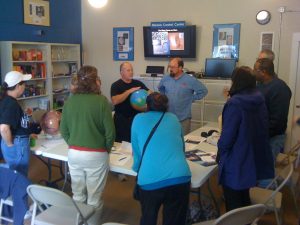
Interestingly the researchers found at there seems to be no benefit in providing students with LD-specific feedback that is specifically linked to their goal attainment (Gersten et al., 2009). This seems to refute the feedback loop that we are encouraged to use as educators in order to help students to move forward in their learning. I will have to consider this when providing feedback to LD students. Perhaps spending more time on heuristics and explicit instruction and use of visuals would provide better scaffolding for their learning. I look forward to your thoughts on these points.
References
Cognition and Technology Group at Vanderbilt (1992). The jasper experiment: An exploration of issues in learning instructional design. Educational Technology Research and Development, 40(1). pp. 65–80.
Gersten, R., Chard., D.J., Jayanthi, M., Baker, S.K., Morphy, P., Flojo, J. (2009). Mathematics instruction for students with learning disabilities: A meta-analysis of instructional components. Review of Educational Research, 79(3), 1202-1242.
Shulman, Lee S. (1986). Those who understand: Knowledge growth in teaching. Educational Researcher, 15(2)., pp. 4-14.
